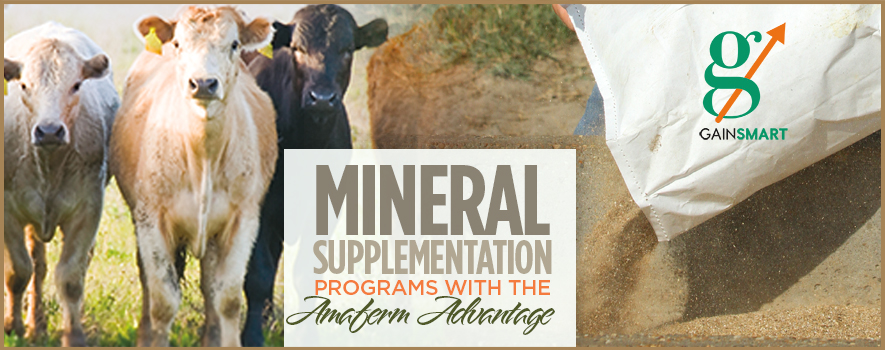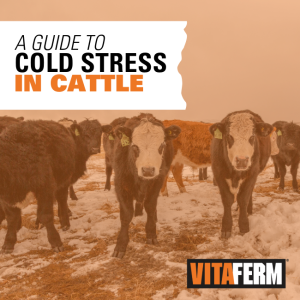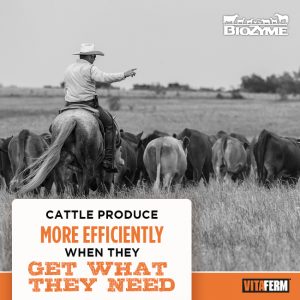
Stockmen know that a solid mineral program will increase performance in grazing cattle. Not only does mineral supplementation provide needed vitamins, macro and trace minerals, but it can also carry extra additives. BioZyme®’s Gain Smart mineral options allow producers to combine the benefits of mineral supplementation with the Amaferm® advantage resulting in increased efficiency, faster gains and improved stocker health.
Before selecting a mineral, remember that mineral levels in forages vary depending on plant species, fertilization, weather conditions and region. A mineral supplementation program is an inexpensive way to make sure the animal’s nutritional requirements are met since the mineral levels vary so much by location and weather. Supplementing cool season grasses, particularly those that are associated with grass tetany such as wheat, rye, fescue and brome grasses, the addition of magnesium is a necessity.
Next to salt (sodium and chloride), phosphorus is the most important macro mineral for grazing cattle since forages are generally low in phosphorus, depending on grass type and stage of maturity. Phosphorus content of native range grasses is about .1 to .2%; fescue is about .3 to .4%; Bermuda grass is .2 to .25%, and meadow grasses are around .2%. Usually as grass matures into reproductive and dormant states its mineral levels will decrease.
Research shows trace mineral supplementation can enhance both stocker performance and health. It is important that adequate amounts of trace minerals are not only fed, but more importantly absorbed into the body for them to be effective. To increase the absorption or bioavailability of the trace mineral they should be fed in an organic form. Proteinated trace mineral offers one of the highest levels of bioavailability. The National Research Council (NRC) has identified 10 trace minerals essential for beef cattle; however, copper, zinc, manganese and selenium are recognized as the most problematic in grazing beef cattle. The National Animal Health Monitoring Service reported that zinc was adequate in only 3% of forage samples collected from across the U.S., and 50% of the samples were marginal in copper. In addition, many forage samples contained minerals (iron and molybdenum) that are antagonist to trace minerals and reduce their absorption.
Mineral supplementation also is an ideal way to also include the advantage of Amaferm, a natural prebiotic that has been shown to enhance forage digestion, increase weight gains and maintain animal health. Research indicates the inclusion of Amaferm increases forage digestion by 9%, and the increase will be converted into both energy and protein for the animal. Stocker performance will respond favorably to Amaferm supplementation.
Other feed additives can be added to mineral supplements to improve gains and animal health because their modes of action compliment Amaferm. Ionophores, both internal and external parasite controls, and disease prevention compounds can be utilized to increase animal prosperity and profits.
In summary, mineral supplement programs for growing cattle can be both effective and profitable management tools. Cattle will respond to proper management by increasing gains and maintaining their health. Many ingredients are available so the proper supplement formula can be fed to match the type of cattle, region of the country, forage type and time of year.


